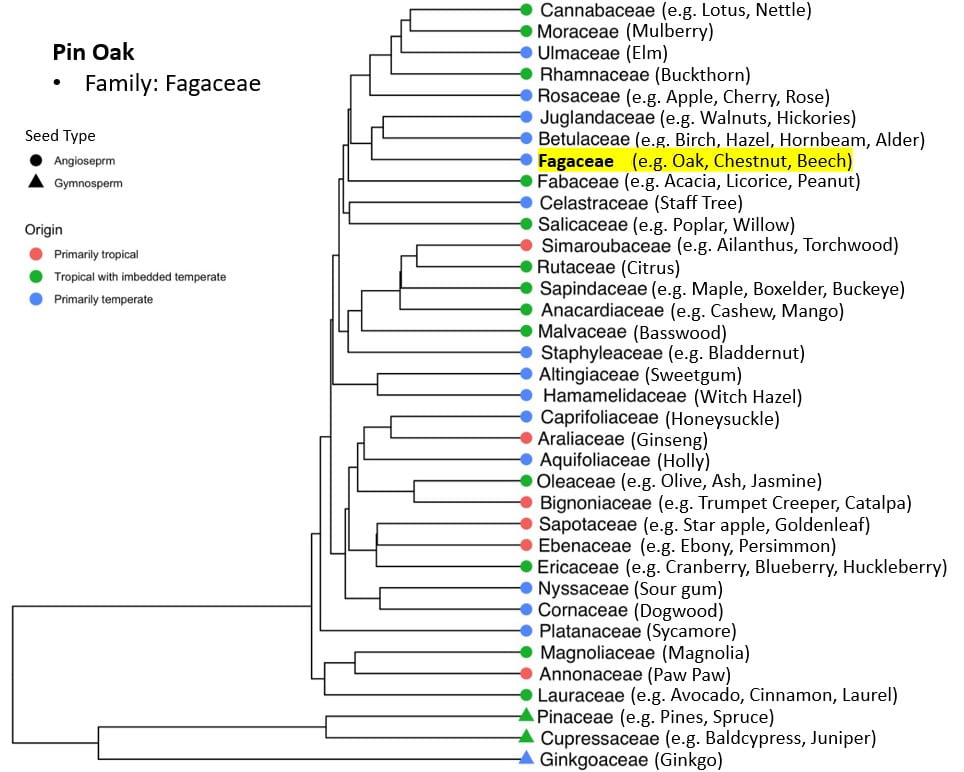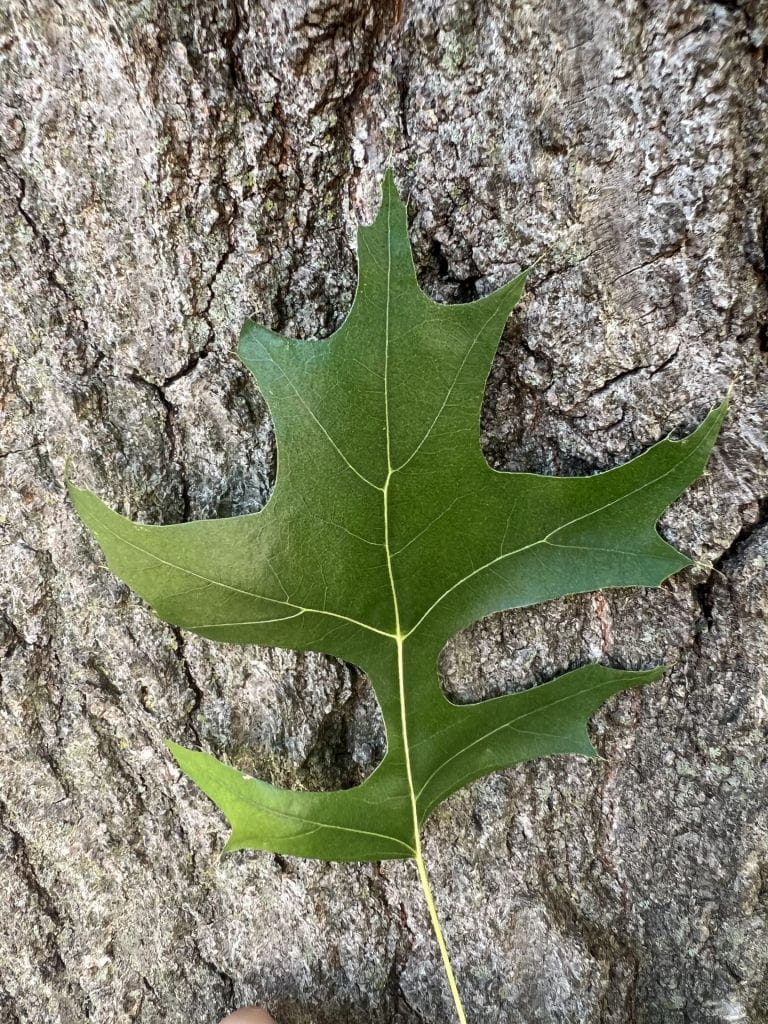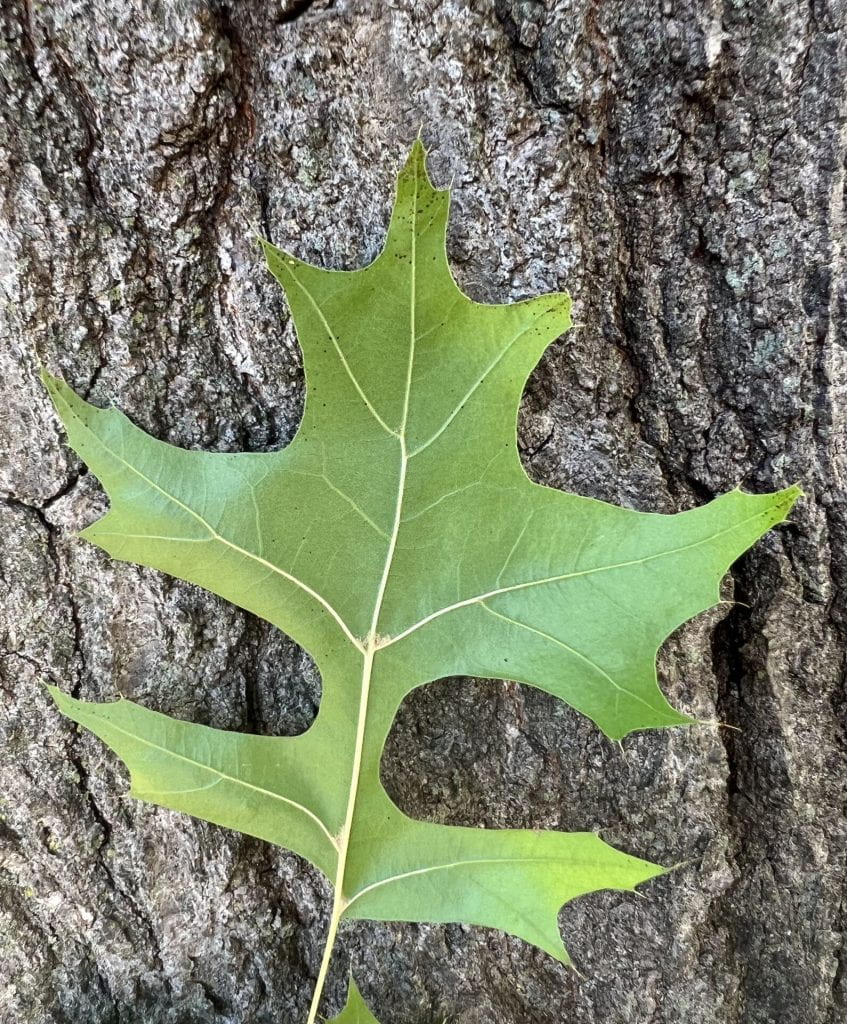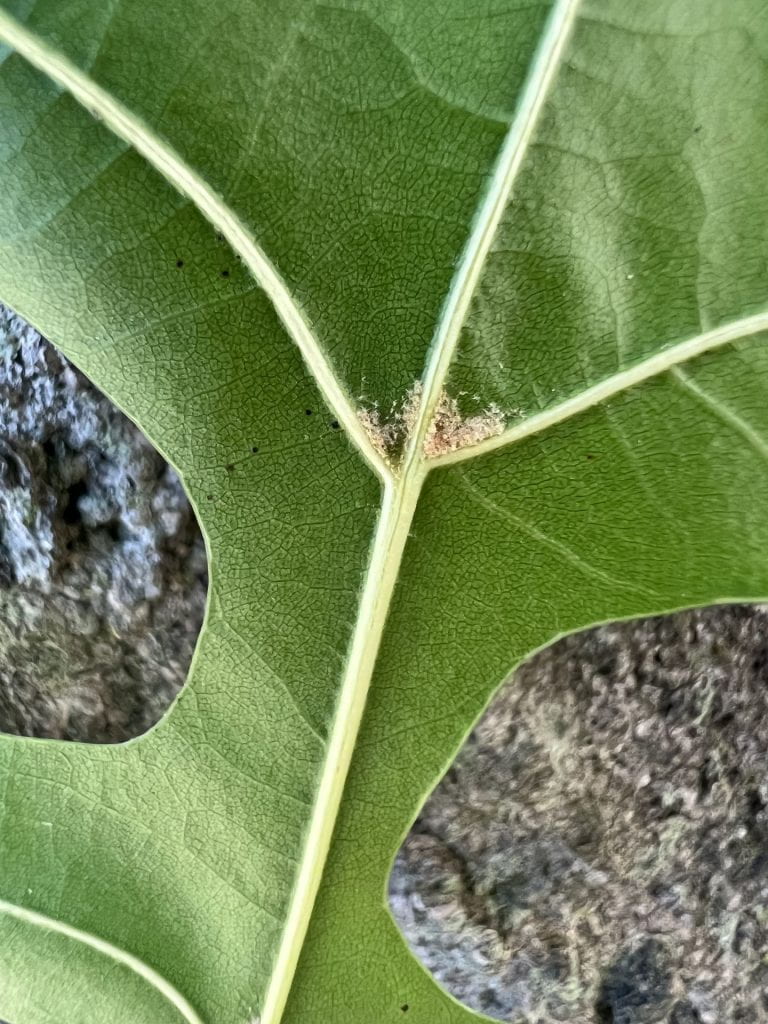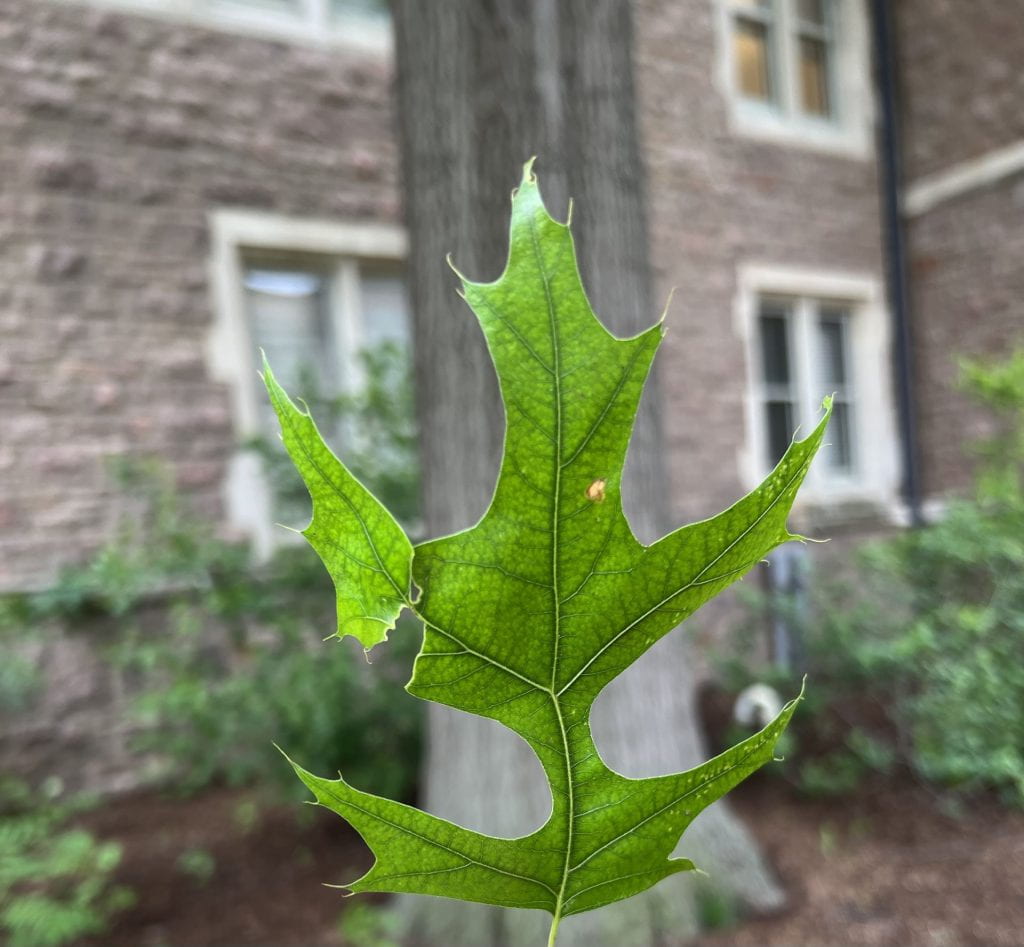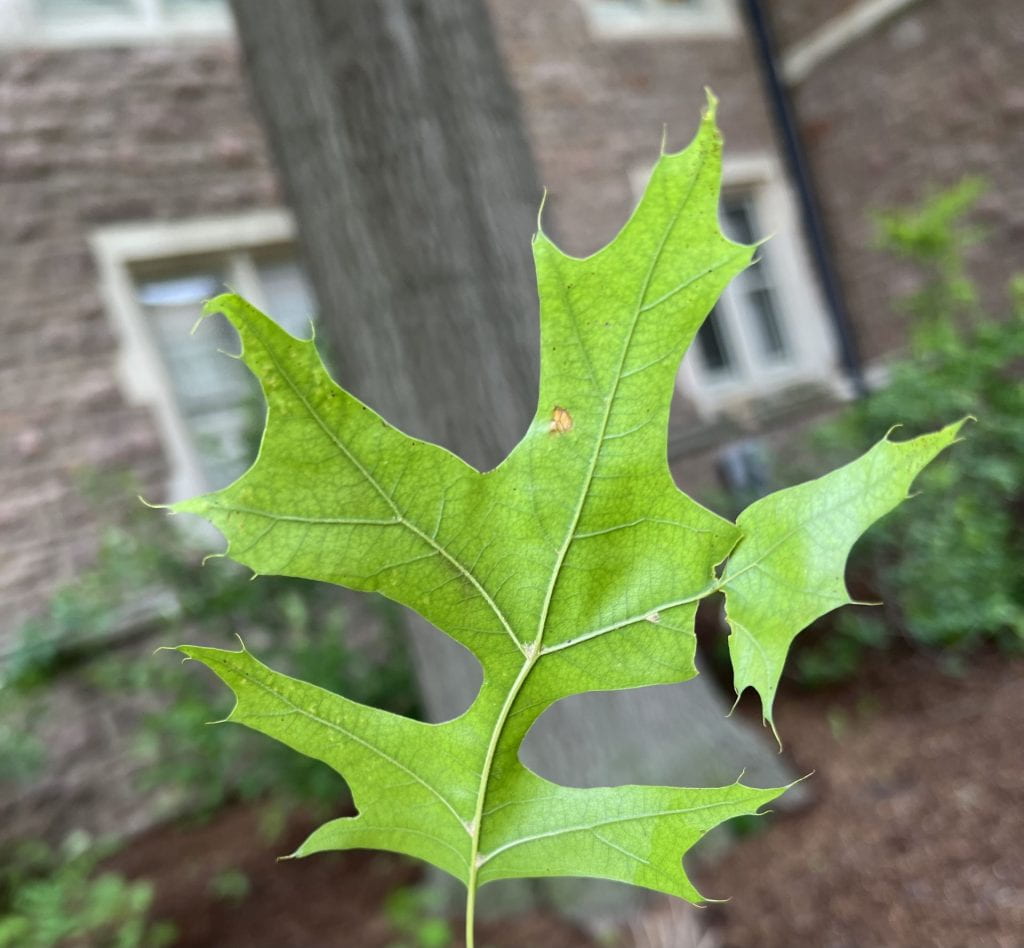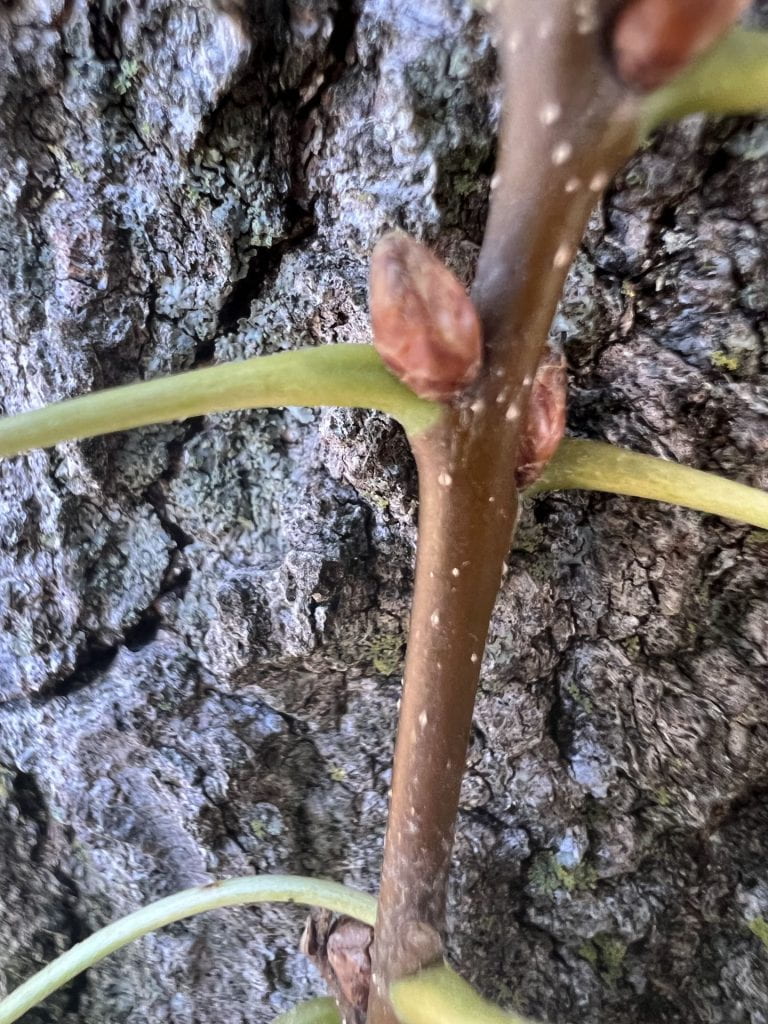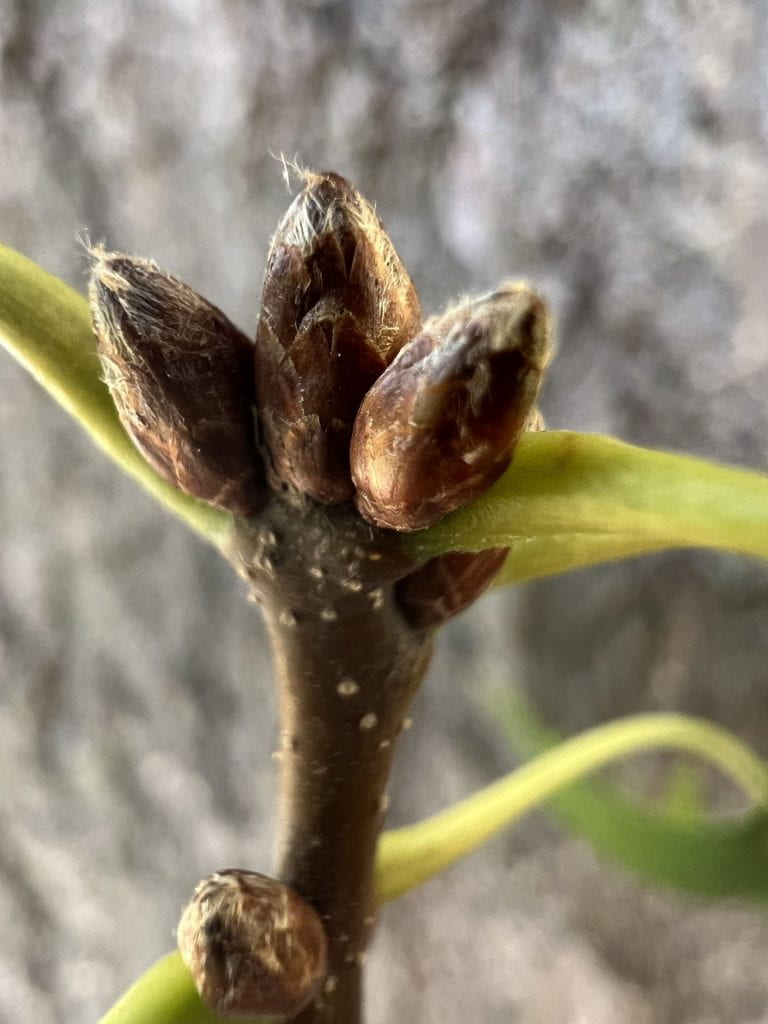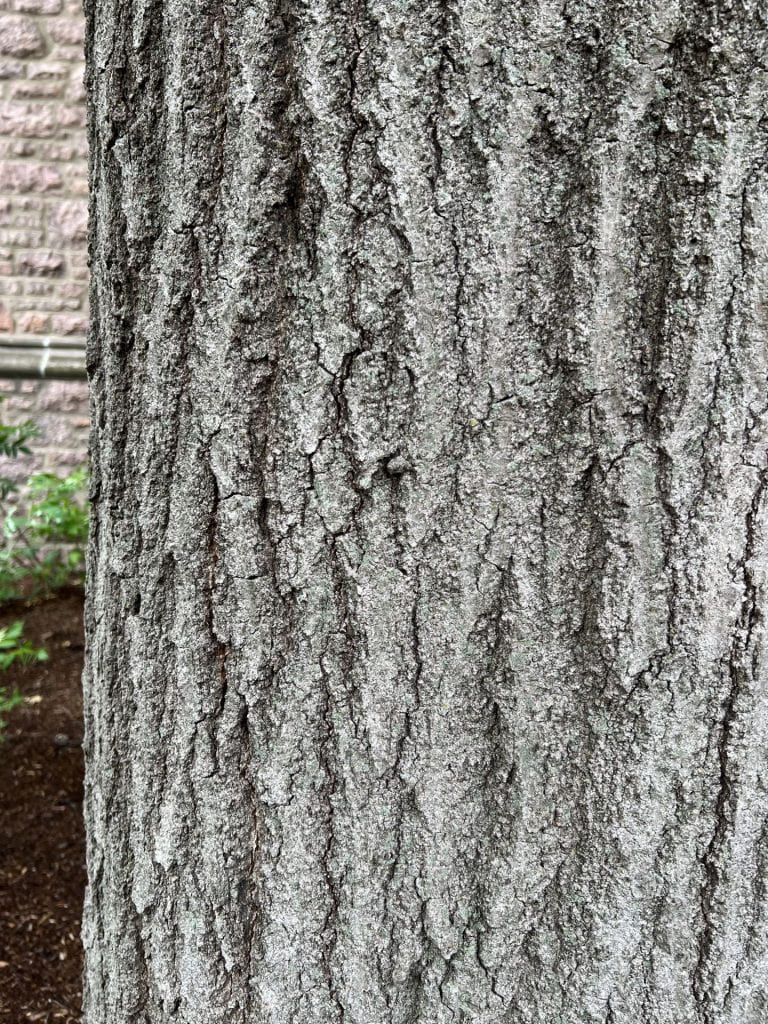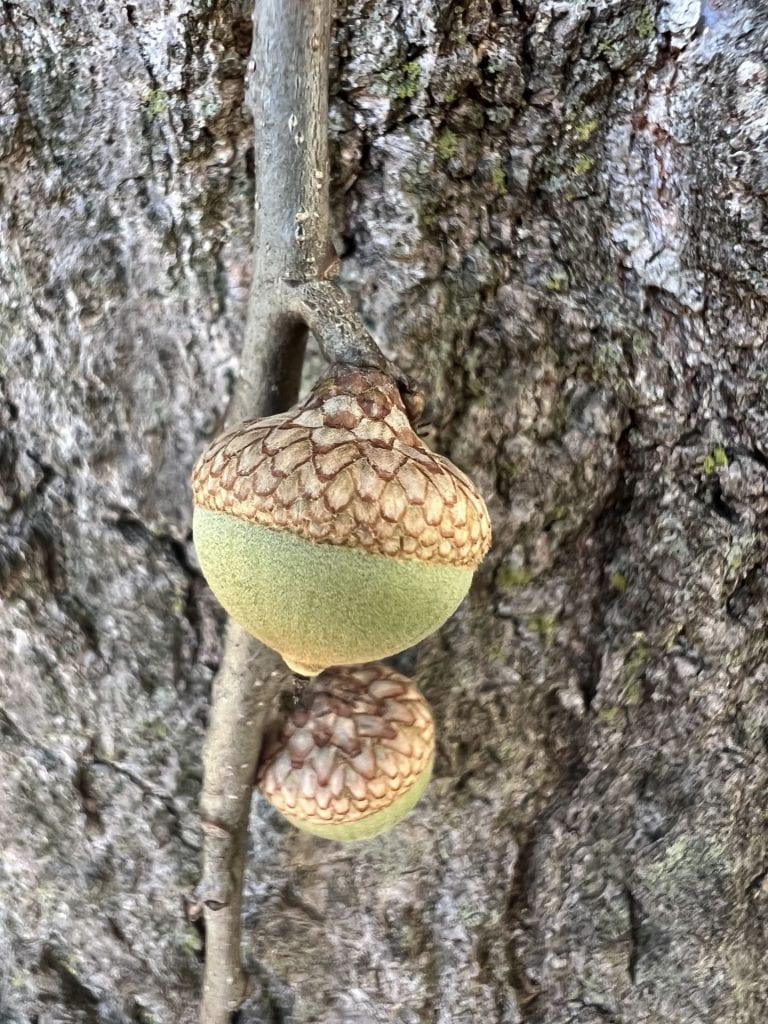Pin Oak
Arbor walk #19, TreeKeeper ID #1810

The pin oak is a popular tree that is planted because of its quick growth and the dense shade it provides. It has a distinct form that is pyramidal during early maturity but turns more oval later in life.
The pin oak is a common choice of tree for landscaping and it has a distinct branching pattern that separates it from the other oaks. Unlike most oaks which have heavy horizontal branches, the pin oak has many slender branches which arch out and hang down; these main branches have pin-like branchlets, hence the name “pin oak”. The pin oak is very susceptible to pH levels in the soil and cannot tolerate high pH soils which cause chlorosis (yellowing).
More information on the Pin Oaks in our Arboretum here!

GPS Coordinates
N/A
Percent Concrete
N/A
Distance to Buildings
| Year | Close Building #1 | Close Building #2 | Close Building #3 |
|---|---|---|---|
| 2020 | Busch Hall, 4.26 m | Brown Hall, 18.68 m | McDonnell Hall, 43.2 m |
Distance to Other Species
| Year | Close Species #1 | Close Species # 2 | Close Species # 3 |
|---|---|---|---|
| 2020 | Swamp White Oak, 17.9 m | Swamp White Oak, 24.35 m | Overcup Oak, 29.2 m |
Standard Measurements
| Year | Height (m) | DBH (cm) | Caliper (m) | Crown Diameter N-S (m) | Crown Diameter E-W (m) | Average Crown Diameter (m) |
|---|---|---|---|---|---|---|
| 2020 | 26.7386 | 96.82 | N/A | 20.7 | 21.7 | 21.2 |
| 2023 | 29.9 | 98.5 | N/A | 17.02 | 23.31 | 20.165 |
| 2024 | 30.91 | 97.7* | N/A | 18.53 | 22.05 | 20.29 |
Nests and Pests
| Year | Description |
|---|---|
| 2020 | Gall on terminal branch may be Oak Bullet Gall Light grey and green lichen on trunk bark Multiple bundles of webbed leaves; fall webworm or tentworm |
Leaf Identification
The Pin Oak has simple leaves alternately arranged on the stem, 3-6″ long. Each leaf has 5 or 7 pointed lobes with awns (bristles) at the tip. The sinuses between the lobes are deep and U-shaped. The leaf is widest halfway up, forming a diamond shape. The leaf is dark green on top with a pale green underside and hairy tufts at leaf vein axils underneath.
Twig and Bud Identification
The twig is brown and smooth with pale white lenticels (pores). The buds are reddish-brown and many-scaled, with medium hairs on the fringes of the upper scales. The terminal buds are clustered.
Bark Identification
The bark of the Pin Oak is gray and ridged, with occasional fissuring but no scales.
Fruit Identification
The Pin Oak acorn is distinctively wide and often striped, with a cup of thin, tan scales that can range from shallow to deep at the top of the acorn. The cup can persist on the stem even after the acorn detaches. This acorn is one of the smallest of the Midwestern oaks, only reaching 1/2″ in diameter.
Flower Identification
Pin Oak flowers are monoecious, with separate male and female flowers on the same tree. The staminate (male) flowers are yellow and on hanging catkins (long, slender clusters of flowers), and the pistillate (female) flowers are miniature, singular, green-red, and located at the leaf axil.
